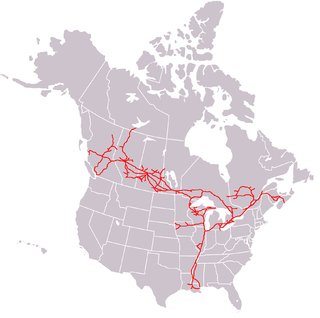
The Canadian National Railway is a Canadian Class I freight railway headquartered in Montreal, Quebec, which serves Canada and the Midwestern and Southern United States.
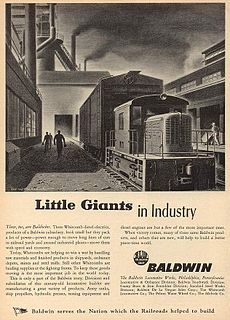
The Geo D. Whitcomb Company was founded by George Dexter Whitcomb (1834–1914), of Chicago, Illinois, who started a modest machine shop in 1878, and began the manufacture of coal mining machinery, laying the foundation for the concern that became known as The Whitcomb Locomotive Company.
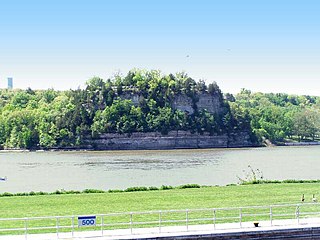
Starved Rock State Park is a state park in the U.S. state of Illinois, characterized by the many canyons within its 2,630 acres (1,064 ha). Located just southeast of the village of Utica, in Deer Park Township, LaSalle County, Illinois, along the south bank of the Illinois River, the park hosts over two million visitors annually, the most for any Illinois state park.

North Lawndale, known to residents as simply "Lawndale", is located on the West Side of Chicago, Illinois. It is one of the well-defined community areas in the city of Chicago.

The Elgin, Joliet and Eastern Railway was a Class I railroad, operating between Waukegan, Illinois and Gary, Indiana. The railroad served as a link between Class I railroads traveling to and from Chicago, although it operated almost entirely within the city's suburbs, and only entered Chicago where it served the U.S. Steel South Works on the shores of Lake Michigan. Nicknames for the railroad included "The J" and "The Chicago Outer Belt Line". At the end of 1970, the EJ&E operated 164 miles of track and carried 848 million ton-miles of revenue freight in that year alone.
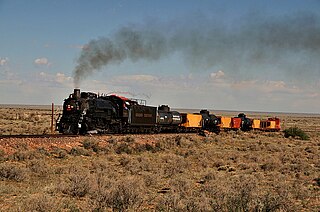
The Grand Canyon Railway, is a heritage railroad which carries passengers between Williams, Arizona and the South Rim of Grand Canyon National Park.
The Union Electric Company of Missouri was an electric power utility that was organized in 1902 and grew to be one of the large U.S. companies listed among the S&P 500. In 1997, its holding company merged with a smaller neighboring utility, Central Illinois Public Service Company through its holding company, CIPSCO Inc., to form Ameren Corporation based in St. Louis, Missouri.

This is a list of properties and districts in Illinois that are on the National Register of Historic Places. There are over 1,800 in total. Of these, 85 are National Historic Landmarks. There are listings in all of the state's 102 counties.
The following is a list of Registered Historic Places in Iron County, Michigan. The list includes 79 structures and historic districts that are significant for their architectural, historical, or industrial/economic importance.

The National Museum of Transportation (NMOT) is a private, 42-acre transportation museum in the Kirkwood suburb of St. Louis, Missouri. Founded in 1944, it restores, preserves, and displays a wide variety of vehicles spanning 15 decades of American history: cars, boats, aircraft, and in particular, locomotives and railroad equipment from around the United States. The museum is also home to a research library of transportation-related memorabilia and documents.

General Electric Research Laboratory was the first industrial research facility in the United States. Established in 1900, the lab was home to the early technological breakthroughs of General Electric and created a research and development environment that set the standard for industrial innovation for years to come. It developed into GE Global Research that now covers an array of technological research, ranging from healthcare to transportation systems, at multiple locations throughout the world. Its campus in Schenectady, New York was designated a National Historic Landmark in 1975.

Mars Lights are signal-safety lights used in the United States and built by Mars Signal Light Company for railroad locomotives and firefighting apparatus. Mars Lights used a variety of means to cause the light to oscillate vertically, horizontally, or both, to catch the attention of motorists and pedestrians.

The Illinois Traction System Mackinaw Depot is a former in use 1909 to 1953 Illinois Terminal Railroad interurban passenger depot in Mackinaw, Illinois that still stands. The Illinois Terminal Railroad ran an over head trolley wire powered railroad from Peoria on the north to St.Louis on the south with branches to Champaign and Urbana. The brick depot and rotary converter "substation" was built in 1909 and designed in the Spanish Colonial Revival style. The station served regularly scheduled electric interurban passenger trains and electric locomotive powered freight trains. The Illinois Power and Light Company also used the building as an electrical substation from 1927 until 1955. Very high voltage alternating current was converted to 600 volt direct current for use by the interurban line's locomotives and interurban cars. Wires entered and left through the large holes in the upper portions of the depot. The station was one of several properties owned by the IT at Mackinaw along with adjacent mainline track and a number of rail sidings, but the other buildings and the track have since been demolished leaving the depot as the only surviving landmark from the era of electric interurban trolley service in the central Illinois area.

Chicago and North Western 1385 is a standard gauge class "R-1" 4-6-0 "Ten Wheeler" type steam railway locomotive built in March 1907 by the American Locomotive Company (ALCO) for the Chicago & North Western Railway (C&NW), which was also known as the North Western. It was one of 325 similar locomotives purchased by the railroad from 1901 to 1908 and designated the R-1 class. C&NW owned more R-1s than any other steam locomotive class.
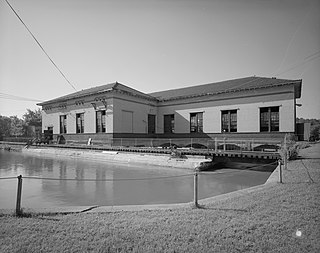
The Marseilles Hydro Plant, also known as the Marseilles Hydro Development or the Marseilles Hydro Power Station, is a historic hydroelectric power station along the Illinois River in Marseilles, Illinois, USA.

The Two Brothers Roundhouse, formerly the Walter Payton Roundhouse, America's Historical Roundhouse, and Chicago, Burlington, & Quincy Roundhouse and Locomotive Shop is a historic building converted to a restaurant in Aurora, Illinois. It was originally constructed in 1856 as a roundhouse for the Chicago & Aurora Railroad and served in this capacity until 1974. It was abandoned until 1995, when a group of investors led by Walter Payton purchased it and converted the building to an entertainment complex. Its most recent tenant is Two Brothers Brewing. The building is the oldest limestone roundhouse in the United States and is listed on the National Register of Historic Places.
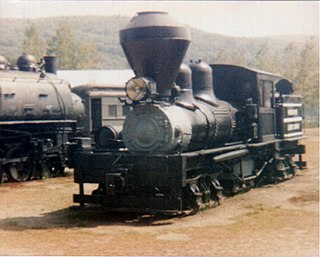
Steamtown, U.S.A., was a steam locomotive museum that ran steam excursions out of North Walpole, New Hampshire, and Bellows Falls, Vermont, from the 1960s to 1983. The museum was founded by millionaire seafood industrialist F. Nelson Blount. The non-profit Steamtown Foundation took over operations following his death in 1967. Because of Vermont's air quality regulations restricting steam excursions, declining visitor attendance, and disputes over the use of track, some pieces of the collection were relocated to Scranton, Pennsylvania, in the mid-1980s and the rest were auctioned off. After the move, Steamtown continued to operate in Scranton but failed to attract the expected 200,000–400,000 visitors. Within two years the tourist attraction was facing bankruptcy, and more pieces of the collection were sold to pay off debt.

The Union Electric Telephone & Telegraph is a historic building located in a small-scale commercial area just north of downtown Davenport, Iowa, United States. It has been listed on the National Register of Historic Places since 1983.
The Vesta Battery Corporation (1897–1964), known until 1929 as the Vesta Accumulator Company, was an American manufacturer of automobile electrical gear. Based in Chicago, Illinois, the company was founded by a former garment worker in 1897. Originally intending to sell parts for electric bicycles, the company quickly diversified to manufacture electrical goods for the burgeoning automobile industry. At its peak, the company had branches in ten American cities. Vesta continued operations until it was purchased by Associated Battery Makers in 1964. Its 1913 factory in Chicago is listed on the National Register of Historic Places.
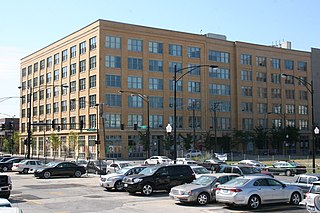
The Automatic Electric Company Building, located at 1000 W. Van Buren Street in Chicago, Illinois, is the original headquarters of the Automatic Electric Company. The company developed and popularized the automatic telephone exchange in the early 20th century. Inventor Almon Strowger had begun producing and selling automatic switches in the 1890s, but never had a permanent factory; when he helped form the Automatic Electric Company in 1901, the company constructed the building on Van Buren as a factory and headquarters. As Illinois Bell, the largest telephone company in Chicago, did not wish to contract with them, the company grew its market by selling to smaller independent telephone companies in the city. Over the next two decades, it expanded to national and then international customers, and after an employee strike in 1919 the Bell System ultimately became a customer as well. The company used the building as its headquarters until 1957, when it moved to a complex in Northlake.



















